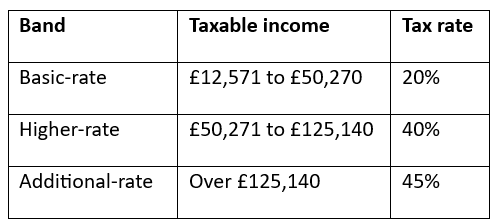A will is an important way of outlining what you’d like to happen to your assets when you pass away. Yet, figures suggest will disputes are on the rise. If you’re worried about potential conflicts when you pass away, read on to discover some useful steps you might want to take.
According to a report in the Guardian, thousands of families have been embroiled in disputes dubbed “ruinously expensive” by solicitors. As well as the potential legal costs, court cases can be emotionally draining and place pressure on your loved ones.
In 2021/22, 195 disputes went to court, up from 145 in 2017. While the figure is low, it’s thought to be just the tip of the iceberg as many cases are settled out of court. Indeed, the report suggests that as many as 10,000 families in England and Wales are disputing wills every year.
A dispute could mean your assets aren’t passed on in a way that aligns with your wishes, or even that someone who you wanted to benefit from your estate is overlooked. If it’s a situation you’re worried about, here are seven steps you could take to reduce the risk of your will being overturned.
1. Speak to loved ones about your wishes
Speaking to your family about your wishes can be difficult. Nonetheless, it could be an important conversation and mean there are no surprises when your will is read, which could reduce the chance of a dispute arising.
If someone in your life discovers they will inherit less than expected or are not a beneficiary in your will after your passing, they may be more likely to react negatively – especially if they’re also grieving your loss. Discussing it during your lifetime could give them time to come to terms with the decision, as well as allow you to explain your reasons.
2. Write a letter of wishes
Similarly, you can write a letter of wishes that could be read alongside your will. This provides an opportunity to explain why you’ve made certain decisions, which could be useful for beneficiaries, the executor of your estate, and, if a dispute arises, the court.
You should take care that the letter of wishes doesn’t contradict what’s written in your will – you may want to ask a solicitor to review it to minimise mistakes.
3. Include a no-contest clause in your will
You could choose to add a no-contest clause to your will. It doesn’t mean that someone can’t raise a dispute, but it can act as a deterrent. Essentially, the clause means that if someone did challenge your will and lose their dispute, they would forfeit any inheritance they may have been entitled to.
So, if you’re worried that a beneficiary could challenge your will to try and receive a larger proportion of your assets, adding a no-contest clause might be useful.
4. Hire a solicitor to write your will
You can write your will yourself without any professional legal support. Yet, a solicitor could provide essential guidance and check the language of your will.
For example, if you’ve used vague or contradictory phrases, there could be a greater opportunity for disputes to arise. It could be particularly important if your estate or plans are complex. Choosing to hire a solicitor may help you feel more confident that your wishes will be carried out.
5. Ask a medical practitioner to witness your will
For your will to be valid, it must be made or acknowledged in the presence of two witnesses. To act as a witness, a person must:
- Be aged over 18 (16 in Scotland)
- Have the mental capacity to understand what they are signing
- Not be related to the person making the will or have a personal interest in the will.
However, if you’re worried that your will could be contested on medical grounds, you might want to ask a medical practitioner, such as your GP, to witness it. This could prevent later accusations that you weren’t of sound mind when writing your will.
6. Regularly review your will
One of the reasons why a dispute may occur is that your beneficiaries don’t believe your will reflects your circumstances when you pass away. So, a regular review might be useful.
Going over your will every five years or following major life events could ensure it remains up-to-date. For example, you might want to make changes after you welcome a new grandchild into the family, remarry, or your wealth changes significantly.
7. Store your will in a safe place
Finally, make sure your will is stored in a safe place and your executor knows where it is. If you’ve rewritten your will, be sure to destroy previous ones to avoid potential confusion.
Understanding your estate could help you make decisions about your will
If you’re deciding how to distribute your assets or need to update your will, understanding your estate could be an important step. Calculating the value of various assets and how they might change during your lifetime could alter how you want to pass them on. Please contact us to talk about your will and wider estate plan.
Please note:
This blog is for general information only and does not constitute advice. The information is aimed at retail clients only.
The Financial Conduct Authority does not regulate estate planning.










